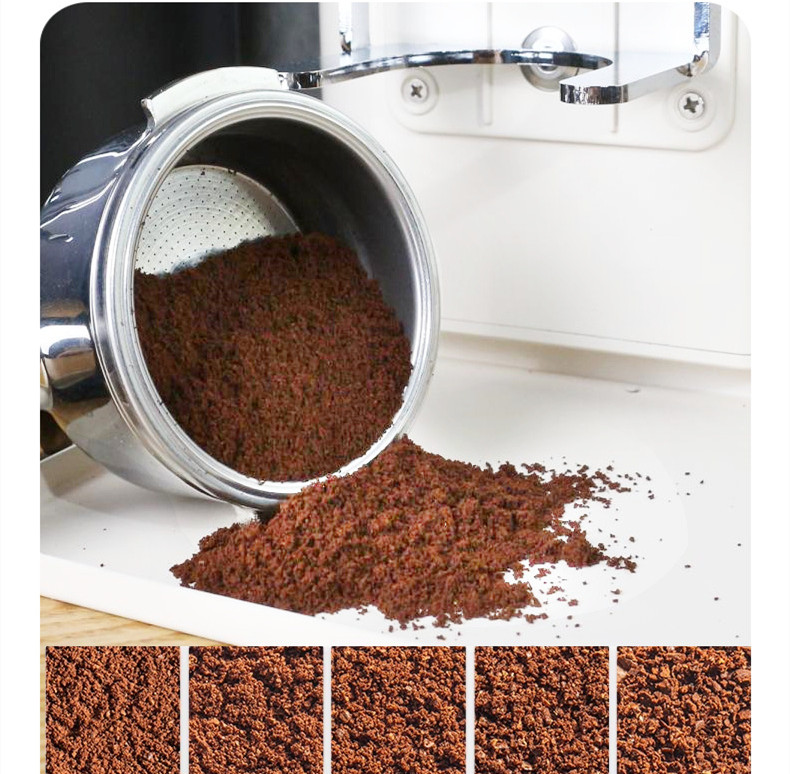Grind Size Essentials for Cold Brew Coffee: Maximizing Smoothness and Flavor Clarity
Cold brew coffee’s slow extraction process demands a grind size that balances surface area exposure with minimal sediment. Unlike hot brewing methods, cold brew relies on prolonged steeping in cold water, requiring adjustments to avoid over-extraction or gritty textures. Here’s how to refine your grind for optimal results.
Understanding Cold Brew’s Extraction Dynamics
Cold brew coffee extracts flavors over 12–24 hours, using time instead of heat to dissolve compounds. This method favors a coarse grind, similar to raw sugar or sea salt, to prevent over-extraction and excessive bitterness.
- Too Fine: A powdery grind releases tannins and oils too quickly, resulting in astringent, muddy coffee with a dry mouthfeel.
- Too Coarse: An overly chunky grind may under-extract, producing weak, sour, or flat-tasting brew lacking complexity.
Coarse Grind Advantages for Cold Brew
A coarse grind offers distinct benefits tailored to cold brew’s unique requirements, ensuring clarity and balance in the final cup.
Minimizing Sediment and Cloudiness
Coarse grounds reduce the risk of fine particles slipping through filters, whether using a French press, mesh bag, or cold brew tower. This creates a cleaner, more visually appealing beverage without the need for straining through additional layers.
- Filter Compatibility: If using a paper filter, a medium-coarse grind (slightly finer than raw sugar) can work but may slow drainage. Stick to coarse for reusable metal or cloth filters.
Enhancing Sweetness and Reducing Bitterness
Cold water extracts flavors more slowly, favoring sweet, chocolatey, and nutty notes while leaving behind harsher compounds. A coarse grind complements this by limiting the release of bitter alkaloids and acidic components, yielding a smoother profile.
- Bean Pairing: Lighter roasts with floral or fruity notes may require a medium-coarse grind to extract delicate flavors without overpowering bitterness.
Adjusting Grind Size Based on Steeping Variables
Cold brew’s flexibility allows customization through grind adjustments, depending on steeping time, water temperature, and desired strength.
Steeping Time and Intensity
- Short Steeping (8–12 hours): A medium-coarse grind accelerates extraction for a quicker, milder brew. Ideal for impatient brewers or those preferring lighter flavors.
- Long Steeping (18–24 hours): Stick to a coarse grind to avoid over-extraction during extended contact with water. This method develops deeper, more robust flavors.
Water Temperature and Agitation
Cold brew is traditionally made with room-temperature or refrigerated water, but some methods use slight warmth to speed up extraction.
- Room-Temperature Brewing: A coarse grind ensures gradual extraction without bitterness. Agitate the mixture occasionally to promote even saturation.
- Refrigerated Brewing: Lower temperatures slow extraction further, requiring a coarse grind and longer steeping times. Avoid finer grinds, as they may never fully extract in cold environments.
External Factors Influencing Grind Decisions
Beyond technique, bean characteristics and environmental conditions play a role in determining the ideal grind size for cold brew.
Bean Origin and Processing Method
- High-Altitude Beans: These tend to be denser and brighter, benefiting from a coarse grind to mellow acidity and highlight natural sweetness.
- Natural/Dry-Processed Beans: Often fruitier and more complex, these beans can handle a medium-coarse grind to emphasize their vibrant notes without muddying the cup.
Storage and Freshness
Stale beans lose volatile compounds, requiring a finer grind to extract remaining flavors. Freshly roasted beans, however, release oils and sugars more readily, making a coarse grind sufficient for balanced extraction.
- Grind Freshness: Always grind beans just before brewing. Pre-ground coffee oxidizes faster, leading to flat flavors regardless of grind size.
By tailoring your grind size to cold brew’s slow extraction process and these influencing factors, you can craft a beverage that’s both nuanced and refreshing. Start with a coarse baseline, then experiment with minor adjustments to suit your taste preferences and brewing setup.


